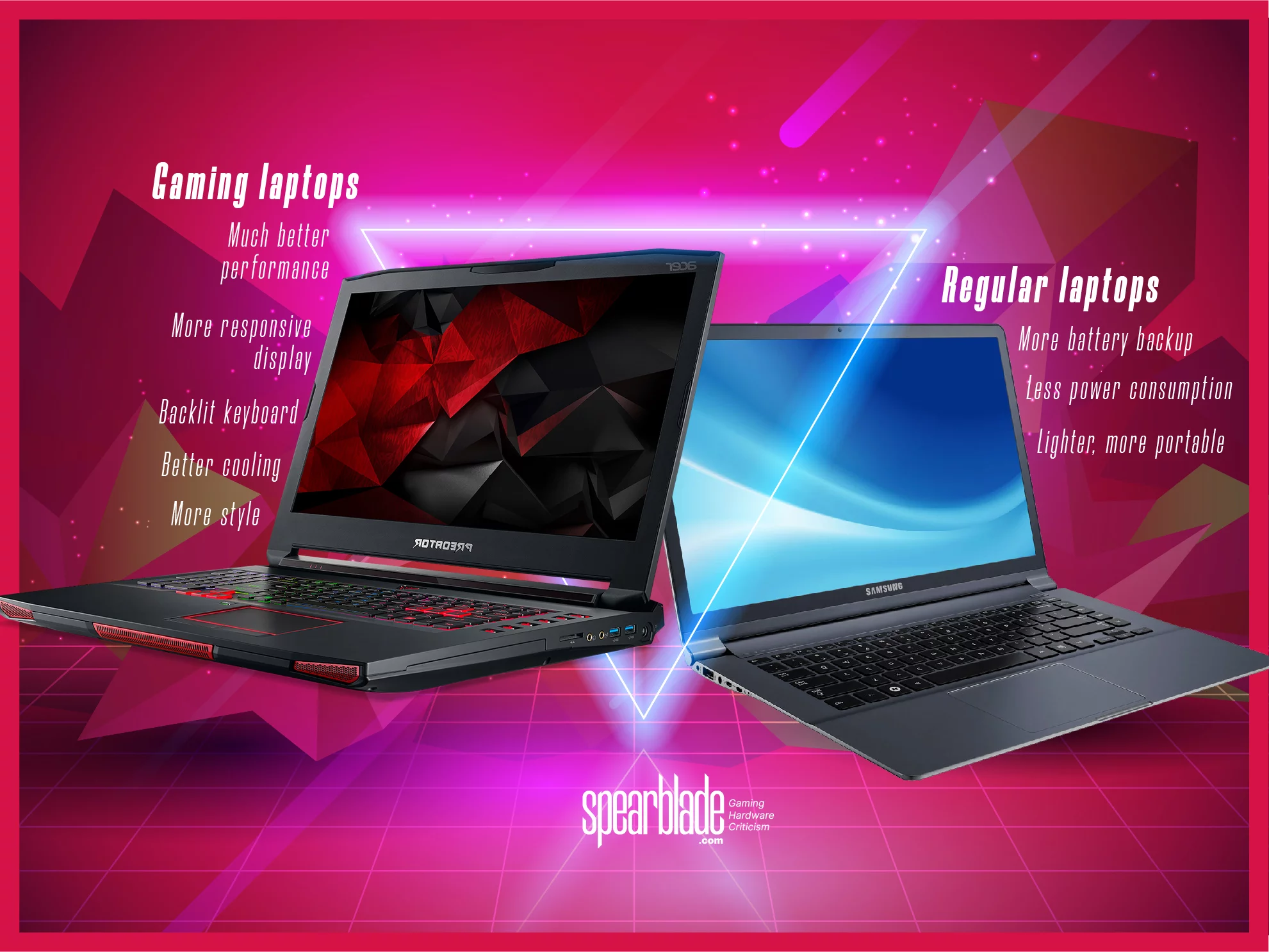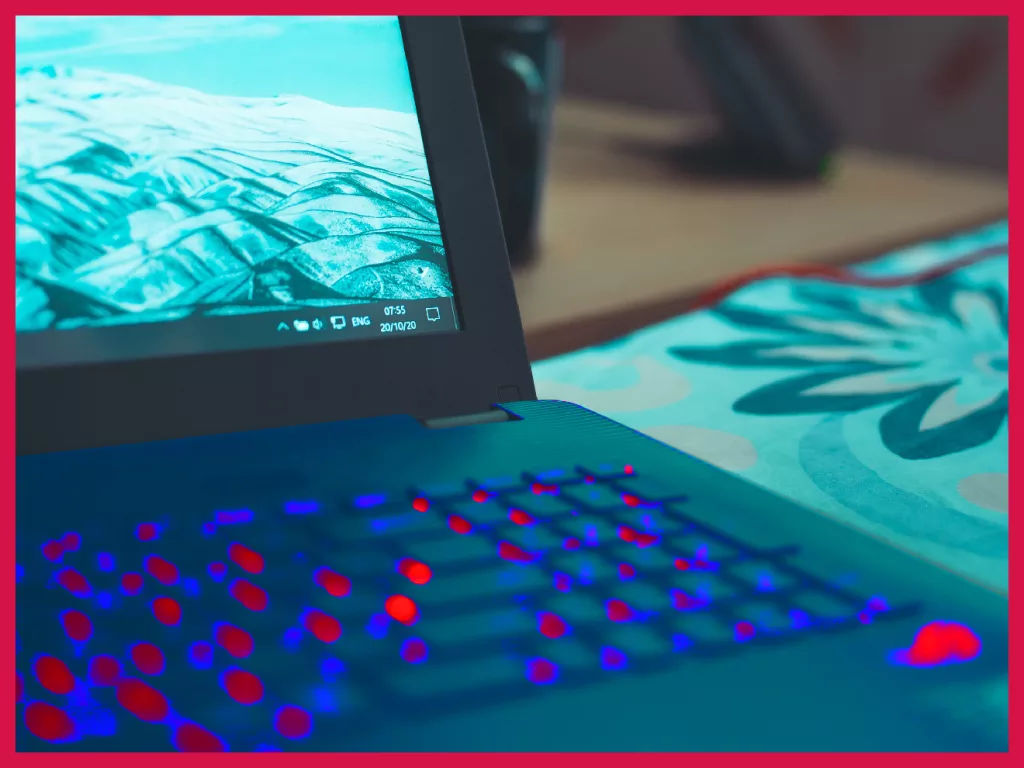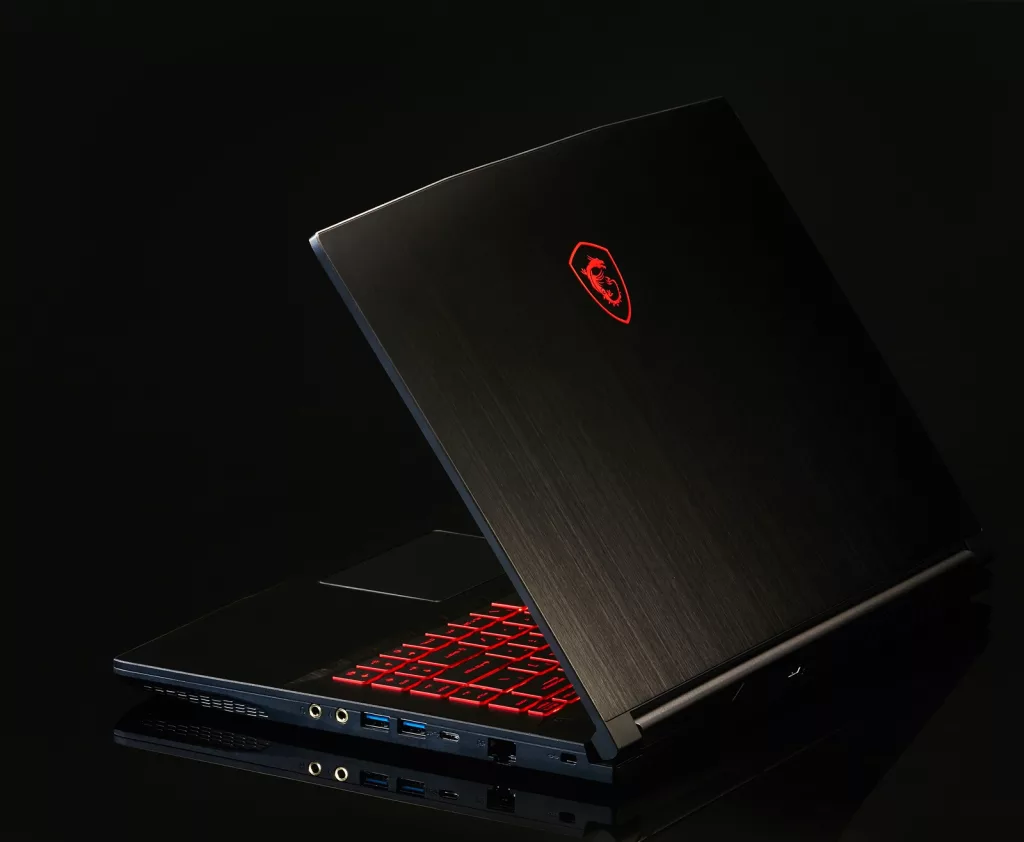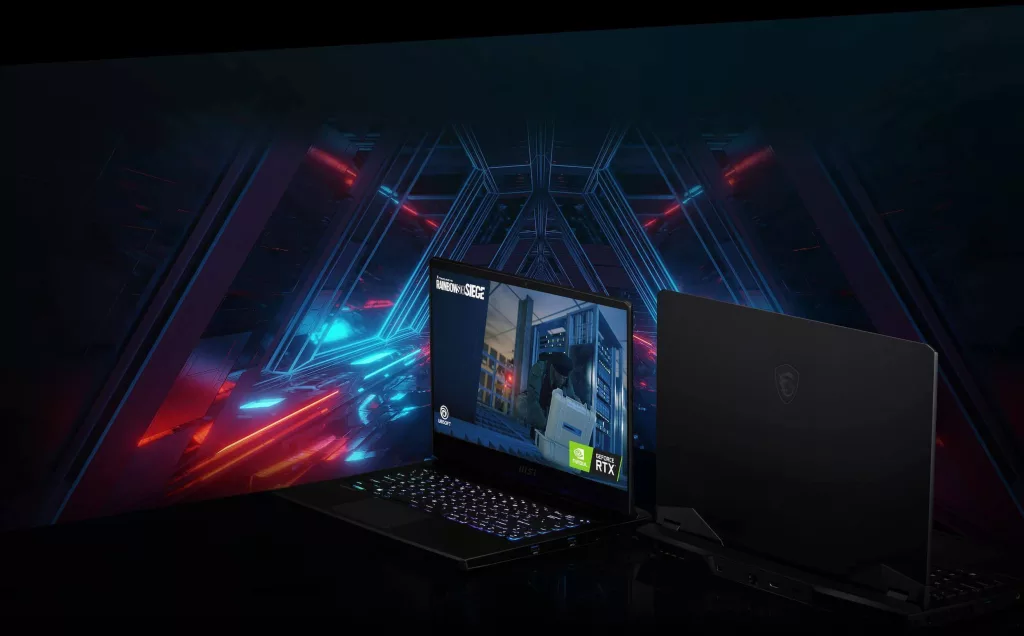For the most part, the difference between a gaming laptop and a non-gaming laptop is the performance. A normal laptop is supposed to give you average performance. Average is relative, yes, but an average performance is likely enough to run 2-3 large apps at the same time. For example, having a browser open (with multiple tabs), having an Office app open like Microsoft Word, while a video is playing in VLC as you’re taking a break from work.
A normal laptop will be able to do that pretty decently. You open a couple more apps and switching back and forth between those will start becoming slow regardless of the operating system.
Many applications require GPU. Adobe applications, for example. If you do photo editing on Photoshop, video work on Premiere, and so on, then a normal laptop will find it difficult to give you a 100% lag-free performance.
Also read: Gaming laptop graphics cards: guide for adding, removing, upgrading, and changing GPUs inside laptops.
Then some apps need much more GPU than they need anything else, like Autodesk Maya or After Effects. No one in their right mind will pick a normal (non-gaming) laptop for these kinds of work.
And even after those come games. Games require a lot of GPU, a fast processor, and a lot of RAM. An SSD on top of that makes sure the loading screens are kept to a minimum. All these features are absent in a normal laptop.
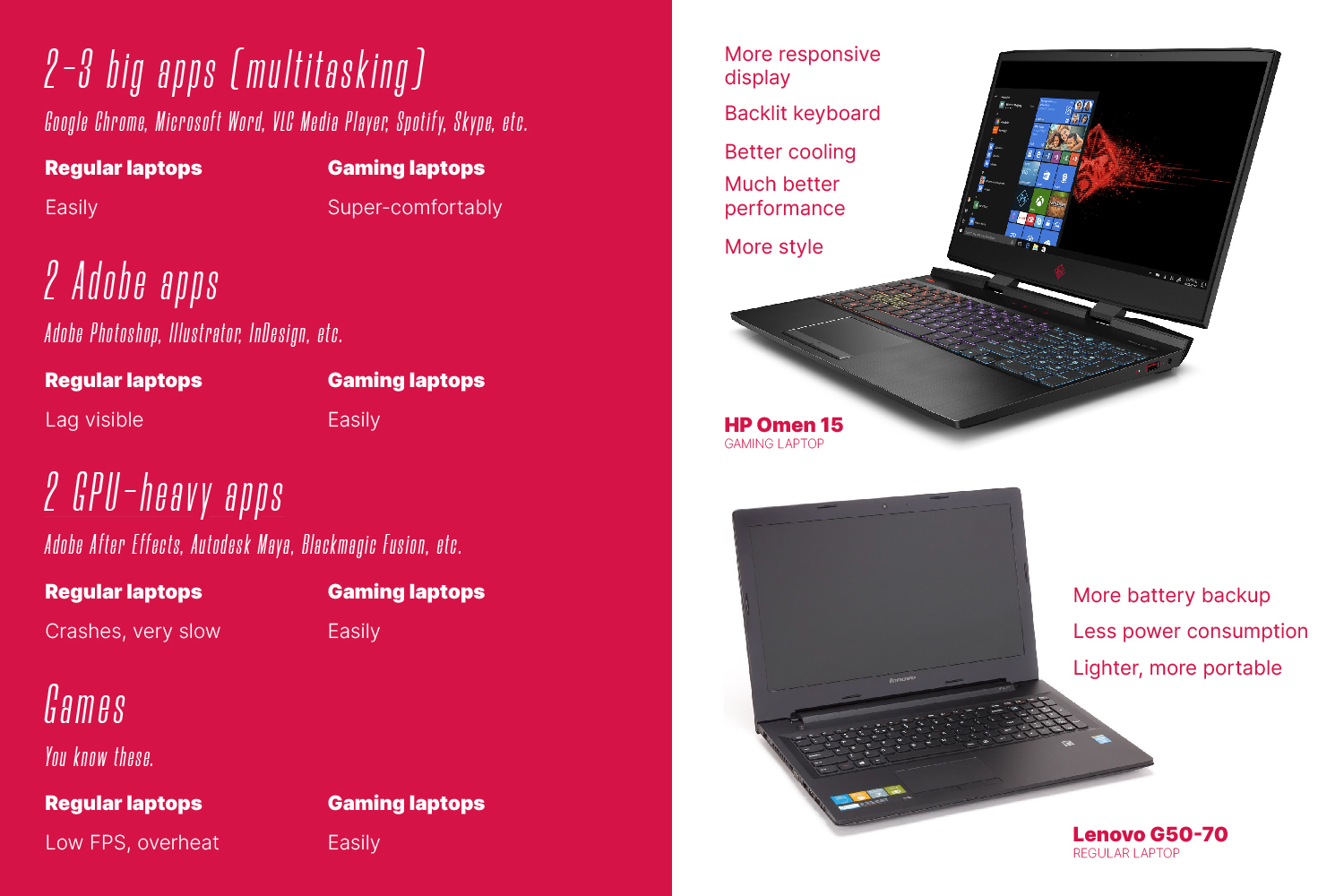
Key Design Differences Between Gaming & Normal Laptops
Eustace from TechUsersGuide has a pretty good guide on this topic with a table that compares the two segments. Mainly, a normal laptop is ideal for business use, family use, and students. A gaming laptop is ideal for, well, gaming, as well as content creation such as video editing and 3D modeling.
Apart from packing much more GPU, CPU, disk, and RAM power than normal laptops, gaming laptops also come with several design differences. Here are a few.
- The display: A gaming laptop’s display offers better refresh and response rates to avoid lag in online or competitive games while making the animations smoother to the eye. Additionally, the minimum a gaming laptop will be is 15.6”, unlike normal laptops, which can be 13″ most commonly.
- Sound: Sound isn’t a priority for all gaming laptop manufacturers and rightly so. Good gamers always game on headphones. But still, many manufacturers want to give gamers the high-fidelity sound that they deserve. Still, Dolby, JBL speakers, or manufacturer’s native sound technologies are pretty common. This is hardly a priority for regular laptops and for the most part, they make do with lower end drivers and sound hardware from sound companies or try to do a half-baked job themselves.
- Cooling: A normal laptop doesn’t care about cooling at all. The fan and heat sink take care of everything. For a gaming laptop, cooling is perhaps the single most important facet. No matter how much power a gaming laptop packs in terms of graphics and processor, if it doesn’t have good cooling then it’s a failure. Gaming laptops usually have 2 fans with metal blades, a chassis with better airflow, and overall better cooling. Some even come with vapor chambers instead of heat sinks.
- Stronger build: Gaming laptops cost more so it’s the manufacturer’s responsibility to ensure they last long as well, what with all the cooling parameters in place that suck the life out of them. A gaming laptop is, therefore, more durable. Stronger plastic and even metal are commonplace in a gaming laptop’s build.
- Better design: Gamers are a target group that likes to see things edgy. As a result, gaming laptops often come with better aesthetics, designs, and even ergonomics than regular laptops.
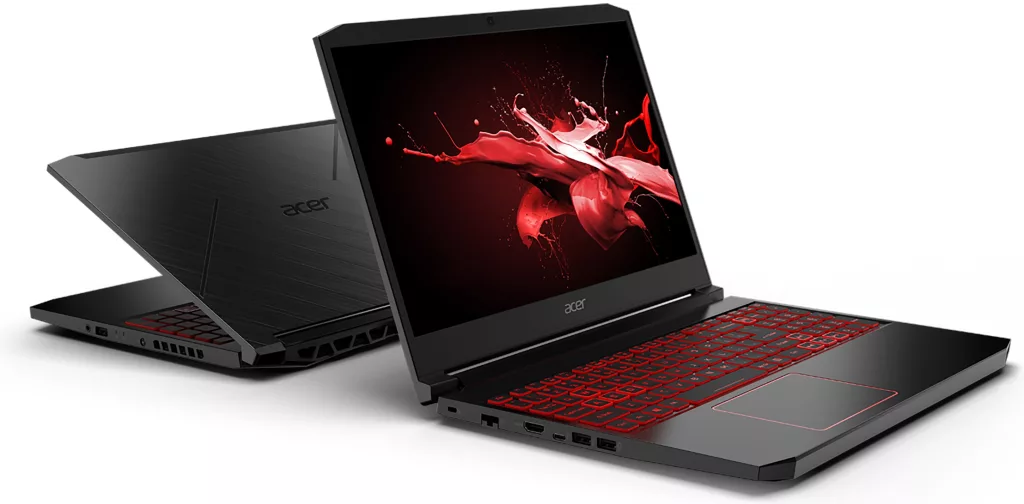
What to Expect in Gaming Laptops, Exclusively?
There are certain considerations that normal laptops don’t require but ones that gaming laptops do. You can expect these in pretty much any good gaming laptop.
- Longer keyboard life: Keystrokes are deeper and more durable as some keys are pressed a lot more than others (WASD for FPS games, QWER for MMORPGs, etc.)
- Backlit keyboards: Gaming laptops are very likely to have backlit keyboards. Good ones almost always have customizable RGB lighting for the keys.
- Faster and more ports: Many normal laptops on the lower end of the price range only offer just two or even one port to connect something via USB. A gaming laptop, on the other hand, must connect to a mouse. It’s a fact. Cooling peripherals, headphones or sound systems, external GPUs, storage devices (games are big, you can’t keep them all on your machine), mechanical keyboards (typical external keyboards if you connect a monitor to play), etc. are all more likely to be used by a gamer than by an everyday laptop user. Therefore, gaming laptops have more ports. And faster ones too, like USB 3.0 or Thunderbolt ports are default, HDMI ports are important (VGA doesn’t cut it for gamers), and so on.
- A bigger adapter: Gaming laptops include hardware that consumes twice, thrice as much power as a normal laptop. The adapter (power brick) is much bigger, so don’t be overwhelmed.
- Abysmal battery life: The battery life of a gaming laptop is simply appalling. Unless you do a whole bunch of adjustments (power saving settings, undervolting, brightness always low) you cannot achieve the same battery backup as what a normal laptop will give you for non-gaming purposes, for example. But as gaming laptops are meant for gaming and you’re not supposed to game on battery power anyway, it’s not an issue.
- Price: Last but not the least, expect the price to be extraordinarily out of proportion. The pricing on gaming laptops beats all notions of computer pricing. They cost not just more than normal laptops, but they cost more than gaming PCs, video game consoles, and probably every Chinese MMORPG that’s built to abuse players not willing to pay to win.


